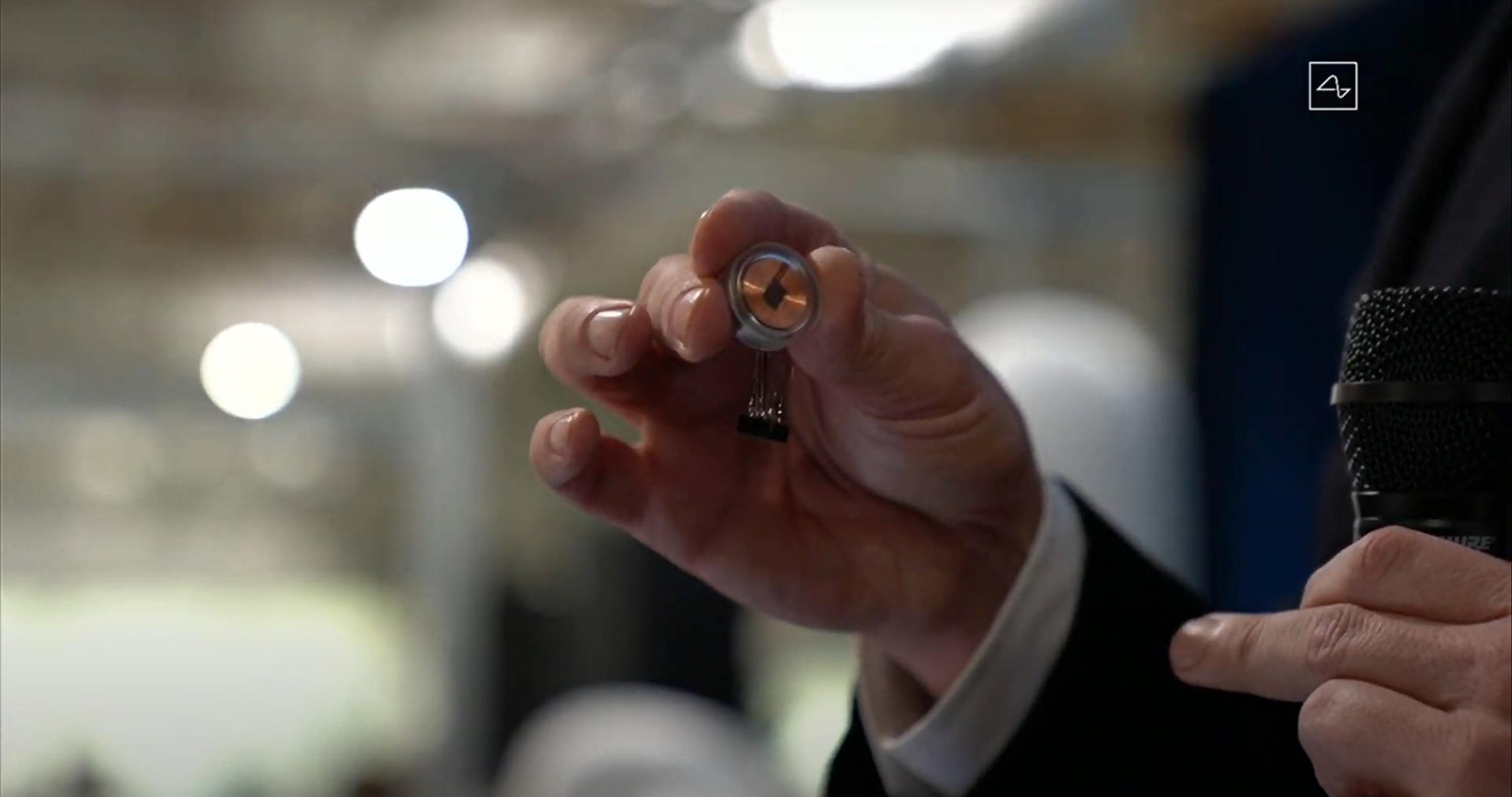

News
EXCLUSIVE: Neuralink dragged into humane testing lawsuit – Timeline of Events
Neuralink has been dragged into a lawsuit by the Physicians Committee for Responsible Medicine against the University of California at Davis. The lawsuit, which is amended from its initial filing date of May 2021, seeks to have UC Davis release images and video of inhumanely-treated test subjects, including monkeys, who died after participating in some trials of Neuralink-sponsored research for the development of neural interface implant devices. We have put together an exclusive timeline of events based on interviews and an examination of over 700 pages of documents that UC Davis was required to turn over to the PCRM.
The Physicians Committee for Responsible Medicine (PCRM) is a nonprofit organization with more than 17,000 doctor members. It filed a formal complaint with the United States Department of Agriculture today, claiming UC Davis and Neuralink staff violated the federal Animal Welfare Act related to experiments performed on 23 monkeys. Neuralink paid more than $1.4 million to UC Davis to carry out the experiments.
The PCRM said in a press release that Neuralink and the University “failed to provide dying monkeys with adequate veterinary care, used an unapproved substance known as “Bioglue” that killed monkeys by destroying portions of their brains, and failed to provide for the psychological well-being of monkeys assigned to the experiment.”
In an exclusive interview with Teslarati earlier today, Jeremy Beckham, MPA, MPH, PCRM’s Research Advocacy Coordinator, said that the lawsuit really intends to open up “basic facts about what Neuralink testing did to the animals.” Beckham said monkeys had their brains mutilated in the experiments. Veterinary records, which were shared with Teslarati by the PCRM, show that UC Davis and Neuralink staff performed invasive and deadly experiments on monkeys to assess the effectiveness of the Neuralink device. The letter sent from the PCRM to the USDA earlier today gives several graphic descriptions of how the test animals were treated.
RELATED:
Neuralink details humane animal treatment during Link v0.9 testing
One animal, known as “Animal 6,” was a 6-year-old macaque monkey who was killed on January 16, 2019. The letter states that, on October 10, 2018, implanted electrodes “were placed using an investigational robot,” then, “attached to skull using titanium implant screws.” The location of the screws began to become infected, according to the letter. By January 14th, “Animal 6” had started to pick at the infected area. Staff euthanized the monkey two days later.
Timeline of Events
PCRM has been working to clarify the situation since September 2020, but a more descriptive timeline of events would clarify how Neuralink, UC Davis, and the PCRM have all combined into this issue.
- May 2017 – The University of California at Davis and Neuralink sign and agree to Non-Disclosure Agreements regarding testing.
- September 2017 – UC Davis and Neuralink officially begin their collaboration to carry out primate experiments at UC Davis facilities. The goal is to develop a brain-machine interface.
- July 2018 – “Animal 4,” an 11-year-old macaque monkey is killed in the Neuralink/UC Davis experiments, according to the complaint. The monkey was “on anti-depressants and had chronic diarrhea and poor appetite.” Additionally, the monkey was observed as “lethargic” and “depressed,” and hunched and passed bloody diarrhea. The monkey eventually died in a deadly procedure on July 20th.
- Also in July 2018 – “Animal 12,” approximately 7-years-old, undergoes a craniotomy and electrode insertion procedure. Records show the animal had “severe clinical adverse effects following the implantation, had poor stool quality, was not eating, and had an eye infection.” Records abruptly ended on July 30th.
- September 2018 – “Animal 21,” a 7-year-old female macaque undergoes an “electrode insertion survivability” procedure using “investigational robotics.” The animal was observed with adverse side effects the following day, including vomiting, gasping, retching, and had little interaction with their environment and observers. The animal was euthanized and had signs of “Bioglue,” an unapproved adhesive, covering the brain.
- December 2018 – “Animal 15,” a 7-year-old female macaque undergoes a craniotomy and recording device implantation. Following the surgery, the area became infected and bloody. The animal was euthanized on March 21, 2019. The performed necropsy shows “remnant electrode threads.”
- January 2019 – “Animal 6,” a 6-year-old macaque monkey is killed as a part of the “experimental design.” Electrodes were secured by screws drilled into the monkey’s skull, and lab staff were forced to “frequently clean” the eroding skin near the monkey’s implant site.
- March 2019 – “Animal 11” is killed at approximately 11-years-old during a terminal procedure. The monkey had an implant placed on the head or brain on December 3rd, 2018, and began experiencing symptoms like a weakened appetite and missing fingers and toes, possibly caused by self-mutilation.
- January 2020 – “Animal 5,” another macaque monkey is killed “inadvertently” by an anticonvulsant. He showed signs of significant weight loss and alopecia.
- July 2020 – Neuralink’s Elon Musk announces that the company will hold an event on August 28th, 2020, to display the progress of the V0.9 device. “Will show neurons firing in real-time on August 28th. The matrix in the matrix,” Musk said in a Tweet.
- Also in July 2020 – Neuralink receives a ‘breakthrough device’ designation from the FDA in July, and the company is working with the agency to make the technology as safe as possible.
- August 2020 – Neuralink unveils the v0.9 device, displaying healthy and functioning pigs. Musk delivers a presentation on the new device, showing the simplified product Neuralink has developed. “It’s like a FitBit in your skull with tiny wires,” Musk half-joked. “I could have it right now and you wouldn’t even know. Maybe I do!” The device is said to be installed without general anesthesia. There will be no bleeding, and no noticeable damage after the device is implanted.
- September 2020 – The PCRM files a California Public Records request, wishing for information regarding UC Davis trials of the Neuralink device. The request is eventually denied in accordance with California State Code 6255(a), which says that the Agency “shall justify withholding any record by demonstrating that the record in question is exempt under express provisions of this chapter or that on the facts of the particular case the public interest served by not disclosing the record clearly outweighs the public interest served by disclosure of the record.”
- October 2020 – “Animal 10,” an 8-year-old macaque monkey, is shipped to Neuralink’s facility in Fremont. The monkey has significant hair loss, had lesions from “unspecified traumas,” and was exhibiting self-mutilating behavior.
- November 2020 – Neuralink severs ties with UC Davis on November 11. Neuralink then moves seven of the remaining monkeys to its facility in Fremont, California. Beckham said that records show 15 of the 23 monkeys used in the research died or were euthanized at UC Davis. The final monkey’s situation is unclear, but it is possible the animal was reassigned to a different project at UC Davis, Beckham said.
- April 2021 – Neuralink releases a YouTube video of “Pager the Monkey” allegedly playing video games with a wireless neural interface. The video features a nine-year-old Macaque named Pager playing “MindPong” while utilizing a Neuralink device.
- May 2021 – PCRM sues the University of California Davis under the California Public Records Act (CPRA) for not releasing records in September 2020. Before the suit reaches a judicial decision, Counsel for the University of California agrees to release 700 pages of information.
- October 2021 – University of California’s General Counsel turns over files including animal testing records and veterinarian reports to PCRM. More than 700 pages of records are turned over.
- February 2022 – PCRM files a separate complaint with the U.S. Department of Agriculture that alleges the information the organization has already received reveals evidence of violations of Federal Animal Welfare laws.
Moving Forward
Beckham maintains that the main point of the newest filing is to have UC Davis turn over photographs and videos that reveal the inhumane treatment of the animals due to the experiments. There are monkeys convulsing, vomiting, and dying in these labs,” Beckham said. “People want to step in line for the first human trials, and they should see this before they commit to that,” he told Teslarati. Neuralink was set for human trials this year, Musk said last year.
Beckham said that these complaints can take a while to work through the legal system. “In my years of being involved with humane testing litigation, I know that these things can take some time. Maybe up to a year,” he said. “It also depends how much they want to fight back.”
Neuralink did not immediately respond to our requests for comment.
Beckham’s full letter to the USDA is available below.
2022-02-10 PCRM USDA Complaint Re UC Davis and Neuralink (No Exhibits) by Joey Klender on Scribd
I’d love to hear from you! If you have any comments, concerns, or questions, please email me at joey@teslarati.com. You can also reach me on Twitter @KlenderJoey, or if you have news tips, you can email us at tips@teslarati.com.
Elon Musk
Elon Musk confirms Grok 4 launch on July 9 with livestream event
The rollout will be accompanied by a livestream at 8 p.m. Pacific Time.
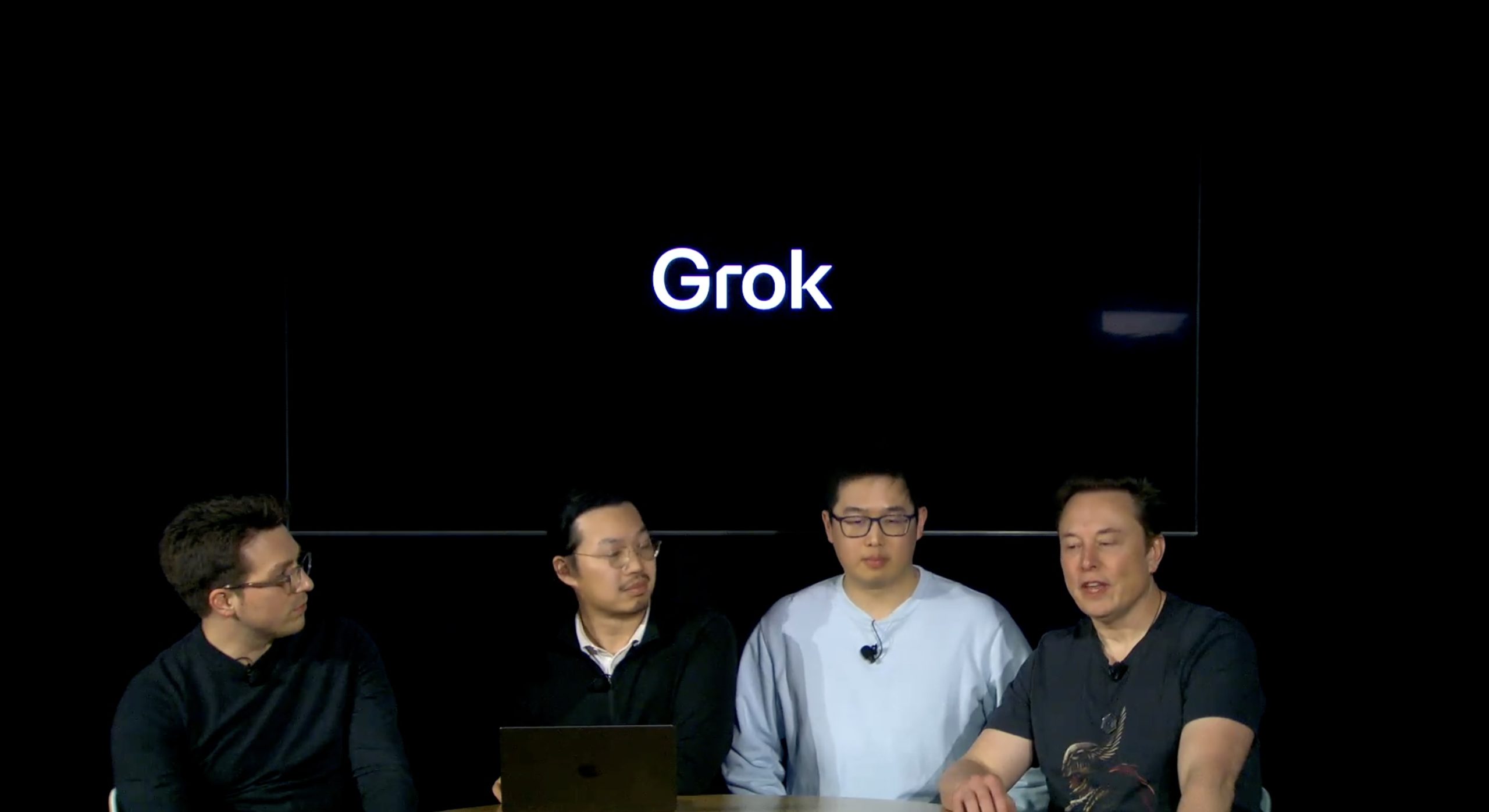
Elon Musk has officially confirmed that Grok 4, the latest version of xAI’s large language model, will launch on July 9. The rollout will be accompanied by a livestream at 8 p.m. Pacific Time, hosted on xAI’s official account on X.
xAI goes straight to Grok 4
Back in May, leaks indicated that xAI was getting ready to ship Grok 3.5. Considering Musk’s recent comments, however, it appears that the artificial intelligence startup would be focusing on the large language model’s fourth iteration instead. As noted in a Financial Express report, users on X have sighted references to Grok 4 in the lead up to the update’s launch, such as “grok-4-prod-mimic” and “Grok 4 Code.”
Musk’s Grok 4 announcement comes as AI competition intensifies between major players including OpenAI, Google, and xAI. With Musk’s Colossus supercomputer fully operational in Memphis, xAI appears to be accelerating its AI product roadmap.
Musk pushes Grok toward political neutrality
Grok 4’s launch also follows a recent controversy involving political bias, as noted in a CNN report. Last week, Grok responded to a user on X stating that political violence in the U.S. since 2016 had come more from the political right than the left. The chatbot noted in a later reply that its answer was based on information from sources like Reuters, the Journal of Democracy, and University of Maryland studies.
Musk stated that Grok’s response was a “major fail.” “Major fail, as this is objectively false. Grok is parroting legacy media. Working on it,” he wrote in a post on X. By the end of June, Musk noted that he was “grinding all night with the xAI team” and that they were making “good progress.” He also stated that the model “Will be called Grok 4. Release just after July 4th. Needs one more big run for a specialized coding model.”
News
Tesla opens massive solar Supercharger station in California
The Supercharger opened to customers ahead of Fourth of July weekend, while Tesla continues phase two of construction on the site.

Tesla has officially launched the first several Supercharging posts at a massive station in California, notably including solar canopies and grid-scale batteries to offer completely renewable charging.
Last week, Tesla announced on X that it opened the first 84 Supercharger stalls of a planned 168-stall station in Lost Hills, California. Additionally, the massive Supercharger project features 11MW of solar canopies and 10 Megapack batteries for off-grid charging powered entirely by solar energy.
Tesla completed the first phase of the project just days ahead of the busy Fourth of July holiday weekend, adding that initial construction took just eight months. In addition to the remaining charging stalls, Tesla says it’s building a set of lounge areas, renderings of which can be seen below alongside current photos of the site.
Notably, the site also includes V4 charging posts for the company’s latest available charging speeds, and it’s located near the busy junction between I-5 and Highway 46 in Kern County.
“Thank you [Kern County] and [PG&E] for collaboration and approvals,” Tesla wrote in a follow-up post.

Credit: Tesla Charging | X
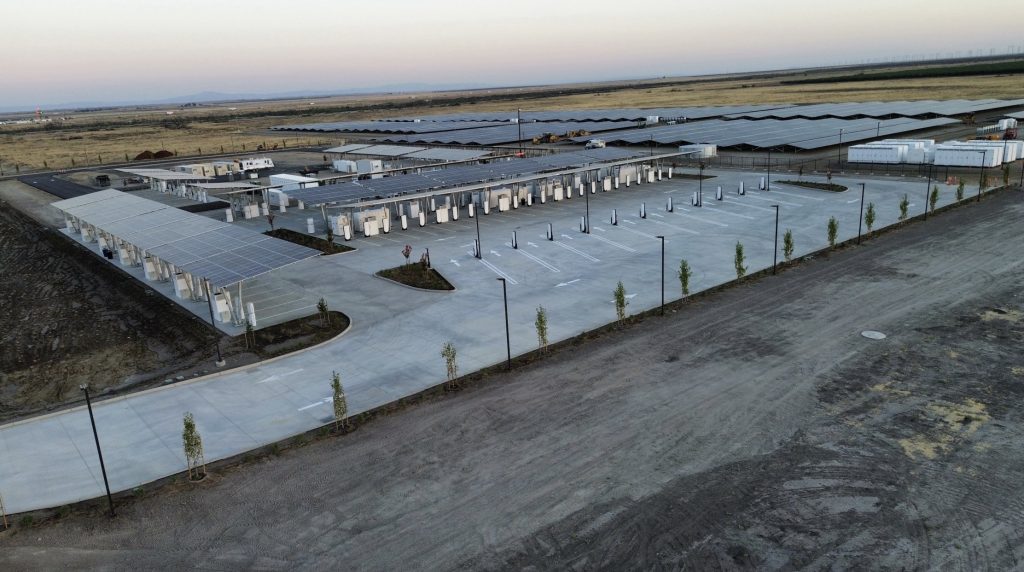
Credit: Tesla Charging | X

Credit: Tesla Charging | X

Credit: Tesla Charging | X
Tesla Supercharger Maps for North America, Europe, and Asia pic.twitter.com/0U5r0XRPyo
— TESLARATI (@Teslarati) July 2, 2025
READ MORE ON TESLA SUPERCHARGERS: Tesla launches ultra-fast V4 Superchargers in China for the first time
Testing at the LA Diner, plus Musk update on potential Tesla solar Gigafactory
The huge Tesla Supercharger station completed phase one of construction fairly quickly, especially given how long Tesla has been working on its unique Los Angeles diner, drive-in, and Supercharger location. Still, the company was seen performing some testing at the nearly-completed charging station earlier this month, and will reportedly be holding a job fair.
Elon Musk also responded on Monday morning to a post on X, suggesting that Tesla is “thinking about” building a U.S.-based solar Gigafactory in order to help support increased power needs with AI growth, and to bolster domestic solar production.
Tesla is building a new UFO-inspired Supercharger in the heart of Alien country
News
Tesla driver walks away from major accident with minor injuries
The driver sustained only minor injuries, and the exact cause of the crash remains under investigation.
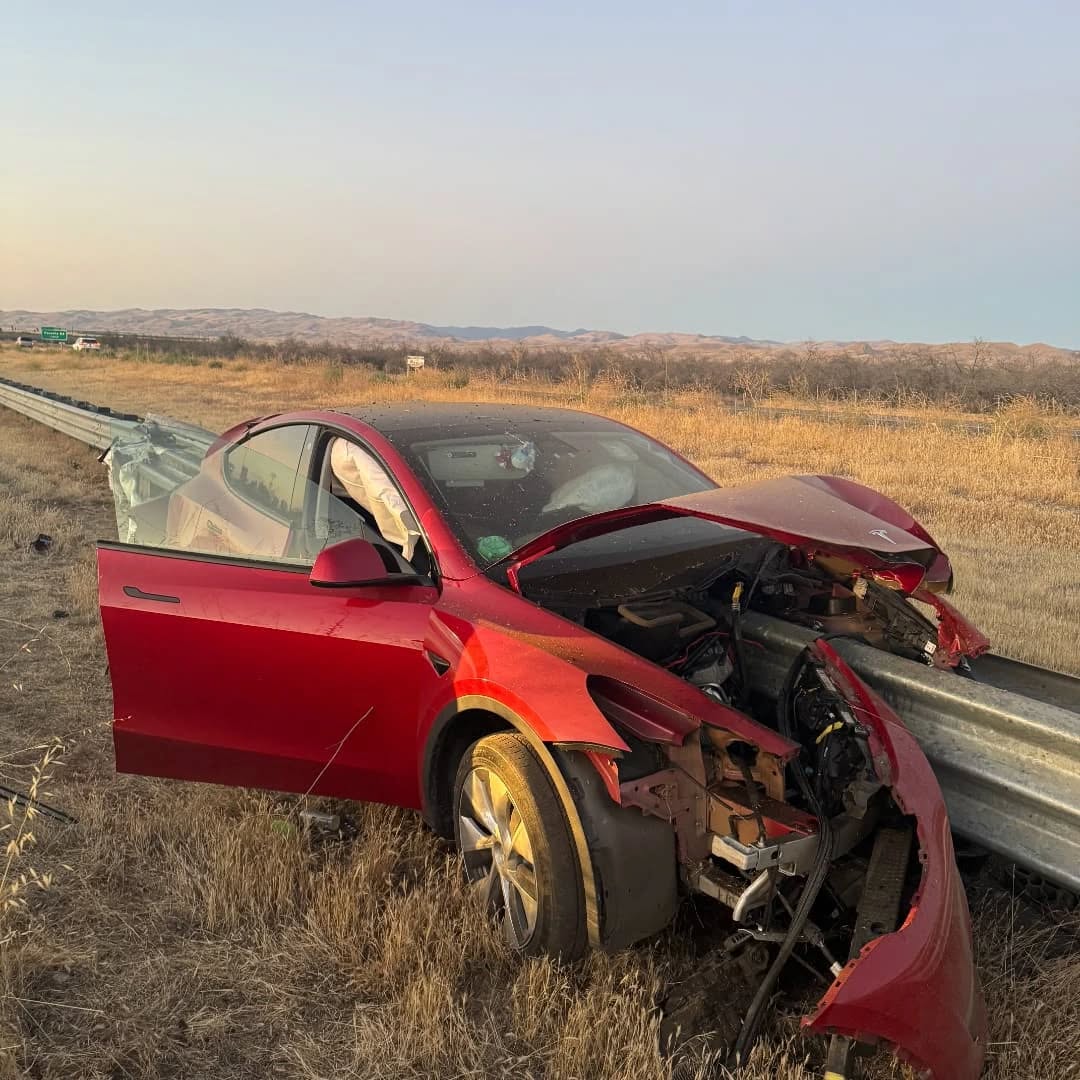
The driver of a Tesla Model Y survived and walked away from a harrowing accident on Monday in California, only sustaining minor injuries despite the vehicle being impaled by a guardrail.
On Monday morning around 4:34 a.m., the Los Banos division of the California Highway Patrol (CHP) responded to the accident on I-5 near Panoche Road, involving a 23-year-old in a Tesla Model Y. According to a post on social media, the driver veered off the road for unknown reasons in the northbound lane, before crashing directly into the guardrail and impaling the vehicle.
You can read the full message and photos from Los Banos CHP below, as were shared in a Facebook post on Monday afternoon.
This morning a Tesla model y was traveling in the #1 northbound lane of I-5 north of Panoche Rd. For unknown reasons driver allowed V-1 to veer off the roadway, travel through a dirt center divide, and crashed into the fixed metal guardrail. Lucky for the driver he only sustained minor injuries and was able to walk away. Driving a vehicle requires 100% attention to the road. Avoid distractions and focus on driving.

Credit: CHP Los Banos (via Facebook)

Credit: CHP Los Banos (via Facebook)

Credit: CHP Los Banos (via Facebook)
In a statement to SFGate, CHP officer Myles Anderson said that the driver only sustained minor injuries, while no arrests are made and drugs and alcohol are not suspected to have been involved. The report also notes that Tesla’s “cruise control and lane assistance features” were activated, according to Anderson. However, it’s not entirely clear if this is referring to Supervised Full Self-Driving (FSD), or to the cruise control and lane assist features baked into Autopilot.
At the time of writing, CHP has not yet responded to Teslarati’s request for clarification and additional details on the matter.
Tesla Crash Safety Ratings across its lineup: pic.twitter.com/ny30R7ceji
— TESLARATI (@Teslarati) July 1, 2025
READ MORE ON TESLA SAFETY: Tesla rolls out crucial new safety feature aimed at saving children
The news comes after Tesla has touted its vehicles as incredibly safe for many years. In December, for example, the company highlighted receiving top safety scores from regulators on four different continents throughout the world, including from the National Highway Traffic Safety Administration (NHTSA) and the Insurance Institute of Highway Safety (IIHS) in the U.S.
Tesla has also listed the goal of making its vehicles the safest on the road throughout the years, both in the overall design of its vehicles and in its Autopilot and Full Self-Driving (FSD) programs.
Tesla Model 3 ranks as the safest new car in Europe for 2025, per Euro NCAP tests
-

 Elon Musk1 week ago
Elon Musk1 week agoTesla investors will be shocked by Jim Cramer’s latest assessment
-

 News2 weeks ago
News2 weeks agoTesla Robotaxi’s biggest challenge seems to be this one thing
-

 News2 weeks ago
News2 weeks agoWatch the first true Tesla Robotaxi intervention by safety monitor
-

 Elon Musk2 weeks ago
Elon Musk2 weeks agoA Tesla just delivered itself to a customer autonomously, Elon Musk confirms
-

 News2 weeks ago
News2 weeks agoTesla Robotaxi rollout proves that Elon Musk still delivers, even if it’s late
-

 Elon Musk2 weeks ago
Elon Musk2 weeks agoxAI welcomes Memphis pollution results, environmental groups push back
-
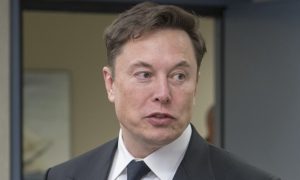
 Elon Musk2 weeks ago
Elon Musk2 weeks agoElon Musk commends Tesla team on successful Robotaxi launch
-

 Elon Musk2 weeks ago
Elon Musk2 weeks agoElon Musk confirms Tesla Optimus V3 already uses Grok voice AI

















